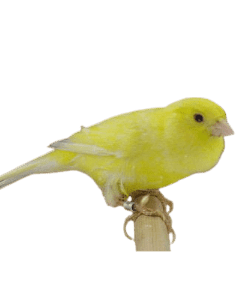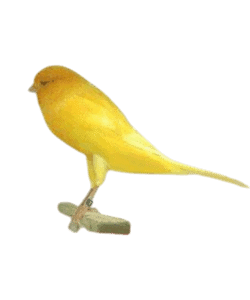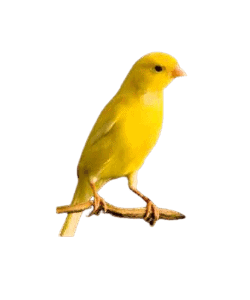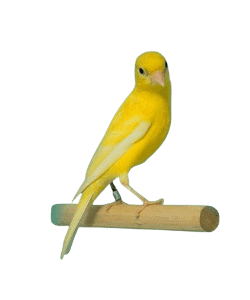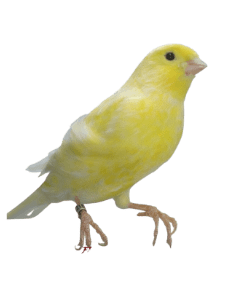What Does a Yellow Canary Sound Like
Have you ever wondered What Does a Yellow Canary Sound Like? Welcome bird enthusiasts and curious minds! Today, we dive into the enchanting world of yellow canaries and their melodious songs. Well, wonder no more! Understanding the sounds of a yellow canary is not only fascinating but also essential for their well-being. So, let’s embark on this musical journey together and explore the captivating vocal abilities of these delightful birds. Get ready to be serenaded by nature’s very own songsters – the yellow canaries!
Importance of understanding the sounds of a yellow canary (What Does a Yellow Canary Sound Like)
Understanding the sounds of a yellow canary is crucial for any bird enthusiast or pet owner. These delightful little creatures have a unique vocal ability that allows them to communicate their emotions, needs and desires through their melodic songs and chirps. By familiarizing yourself with the different sounds they produce, you can develop a deeper connection with your yellow canary and provide optimal care.
Yellow canaries possess an impressive range of vocalizations that are both enchanting and mesmerizing. Their songs are characterized by high-pitched and clear tones which resonate beautifully in any environment. From cheerful melodies to rhythmic patterns, their repertoire of chirps and trills is diverse and captivating.
The expressive nature of these songs reflects the joyful disposition of yellow canaries. Their vibrant vocalizations, filled with energy and enthusiasm, bring life to any space they inhabit. The soothing sounds produced by these little songbirds create an atmosphere of tranquility and serenity.
Various factors influence the sounds made by yellow canaries. The age and maturity level play a role in shaping their vocal abilities, as younger birds may have less developed singing skills compared to older ones. Additionally, environmental influences such as light levels or temperature variations affect how often they sing.
Interaction with other canaries also impacts their vocalization patterns since they learn from one another through socialization. This highlights the importance of providing opportunities for your yellow canary to interact with fellow birds or even playing recorded bird songs for them to mimic.
By paying careful attention to your yellow canary’s vocalizations, you will be able to interpret what they are trying to convey accurately. Recognizing signs of happiness or contentment in their serenading songs during courtship or mating season shows that your feathered friend is thriving under your care.
On the other hand, certain alarm calls or warning sounds might indicate stress or discomfort within their environment or health issues needing attention from you as a responsible pet owner.
A brief overview of the yellow canary’s vocal abilities
The yellow canary is known for its beautiful and melodious song, making it a favorite among bird enthusiasts. Their vocal abilities are truly remarkable, showcasing their unique talent and charm.
When it comes to singing, the yellow canary has a wide range of vocalizations at its disposal. They possess high-pitched and clear tones that are pleasing to the ears. From chirps to trills, they have a varied repertoire that adds depth and complexity to their songs.
One notable characteristic of the yellow canary’s vocalization is its rhythmic patterns and sequences. They have an innate ability to create captivating melodies with seamless transitions between notes. Listening to their songs feels like being transported into a different world filled with joy and tranquility.
Their songs are not just mere sounds; they convey emotions too. The expressive nature of their vocals reflects their vibrant personality. It’s hard not to feel cheerful when you hear them sing as their melodies uplift your spirits.
What makes the yellow canary’s vocalizations even more special is the energy and enthusiasm they put into every note. Their songs resonate with passion, leaving listeners captivated by their sheer dedication.
Moreover, these enchanting creatures produce soothing sounds that have a calming effect on both humans and other birds alike. Their melodic tunes create an atmosphere of serenity wherever they go.
Understanding the intricacies of the yellow canary’s vocal abilities allows us to appreciate them even more deeply. By observing closely, we gain insight into their well-being or potential discomfort through changes in pitch or rhythm.
The yellow canary possesses extraordinary vocal abilities that encompass melodic nature, high-pitched tones, varied repertoire of chirps and trills, rhythmic patterns & sequences while expressing vibrancy & vigor along with captivating & soothing sounds which provide happiness & contentment! Bonding with these delightful birds brings immense joy as we become attuned to interpreting their unique language through attentive observation!
Characteristics of a Yellow Canary’s Song (What Does a Yellow Canary Sound Like)
The melodic nature of a yellow canary’s song is truly something to behold. Their vocal abilities are as enchanting as their vibrant plumage, captivating anyone who has the pleasure of listening to them. With high-pitched and clear tones, they sing with a clarity that is unmatched in the avian world.
What sets the yellow canary apart from other birds is its varied repertoire of chirps and trills. They have an impressive range of sounds at their disposal, creating mesmerizing melodies that seem to dance through the air. These rhythmic patterns and sequences are like musical notes floating on a breeze.
When describing the vocalization of a yellow canary, words such as expressive and vibrant come to mind. Their songs exude cheerfulness and uplift listeners with their joyful tunes. Listening to their energetic and enthusiastic vocalizations brings about an undeniable sense of delight.
There is something undeniably captivating about the soothing sounds produced by these little songsters. It’s almost as if they have mastered the art of serenading us with their sweet melodies, providing moments of tranquility in our daily lives.
The characteristics found within each yellow canary’s song are unique and personal, just like human voices differ from one another. No two canaries sound exactly alike, adding yet another layer of fascination when it comes to understanding these delightful creatures’ vocal prowess.
By observing age, environmental influences, social interactions among themselves or even recognizing signs expressed through well-being or stress levels in their vocalizations during courtship or alarm calls; we gain insight into what makes these tiny singers tick!
Melodic nature of their songs | What Does a Yellow Canary Sound Like?
The melodic nature of the yellow canary’s songs is truly a delight to behold. These small, vibrant birds possess an incredible vocal range and use it to serenade us with their beautiful melodies. Their songs are like little bursts of sunshine, filling the air with joy and cheer.
When a yellow canary sings, you can expect high-pitched and clear tones that resonate through the room. It’s almost as if they have been blessed with the gift of perfect pitch! Their voices carry effortlessly, capturing our attention and making us pause to appreciate their talent.
But what makes their songs even more captivating is the varied repertoire of chirps and trills they incorporate into their melodies. Each song seems to tell a story, weaving together different notes in rhythmic patterns and sequences that leave us mesmerized.
Listening to a yellow canary sing is like being transported to another world – one filled with pure bliss and tranquility. Their expressive vocals bring forth feelings of happiness and contentment, lifting our spirits on even the gloomiest of days.
These energetic performers pour their hearts into every note they sing, creating an atmosphere that is both lively and enchanting. The sound of a yellow canary singing fills your soul with warmth and reminds you of life’s simple pleasures.
High-pitched and clear tones | What Does a Yellow Canary Sound Like
High-pitched and clear tones are one of the distinctive characteristics of a yellow canary’s song. These tiny birds have the ability to produce sounds that are both high in pitch and crystal-clear in tone, making them easily recognizable among other bird species.
When a yellow canary sings, its voice often reaches heights that seem almost impossible for such a small creature. The clarity of their notes is equally impressive, with each sound resonating through the air with precision and accuracy.
The high-pitched and clear tones of a yellow canary’s song add to its melodic quality, creating enchanting melodies that captivate anyone who listens. These unique vocal abilities make them popular pets for those seeking cheerful tunes echoing throughout their homes.
It’s fascinating how these little creatures can emit such powerful sounds despite their small size. Their ability to reach high notes with clarity showcases their exceptional vocal capabilities and adds an element of charm to their songs.
As you listen to a yellow canary sing its sweet serenades, you’ll be amazed at how effortlessly they hit those high pitches while maintaining perfect clarity. Their melodious voices fill the room with uplifting energy, adding joy and vibrancy to any environment.
Rhythmic Patterns and Sequences
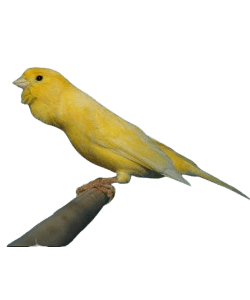
The rhythmic patterns exhibited by yellow canaries are often characterized by their consistency and precision. Their chirps follow a specific tempo, creating a sense of rhythm that is both soothing and uplifting to the ears. It’s almost as if these tiny birds have their own internal metronome, allowing them to create harmonious tunes effortlessly.
In addition to their rhythmic patterns, yellow canaries also showcase impressive sequencing skills in their vocalizations. They have the ability to string together different notes and pitches in a seamless manner, resulting in beautiful melodies with clear beginnings, middles, and ends.
These musical abilities are not only fascinating but also serve important purposes for yellow canaries. Through their rhythmic patterns and sequences, they communicate various messages such as courtship calls or territorial warnings to other members of their species.
It’s truly remarkable how these small creatures possess such innate musical talents. The melodic symphony created by a yellow canary is nothing short of magical – an auditory experience that brings joy and serenity to all who have the privilege of listening.
So next time you hear the delightful song of a yellow canary, take a moment to appreciate its rhythmic patterns and sequences. You might just find yourself captivated by nature’s very own composer!
Describing the Yellow Canary’s Vocalization | What Does a Yellow Canary Sound Like
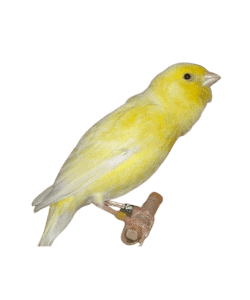
The repertoire of sounds produced by a Yellow Canary is truly varied. From cheerful chirping to complex trills, they have an impressive range of vocalizations at their disposal. Each sound seems carefully crafted, as if the bird itself is composing its own little song.
One fascinating aspect of the Yellow Canary’s vocalization is the presence of rhythmic patterns and sequences. They create beautiful melodies by combining different notes in specific arrangements. It’s like listening to a miniature orchestra where each bird has its own part to play.
Describing these sounds accurately can be challenging since words often fall short when trying to capture such intricate beauty. Some may describe it as tinkling bells or soft fluting, while others liken it to sweet whistling or even bubbling water.
Many factors influence the unique sounds produced by Yellow Canaries. The environment plays a significant role, with birds adapting their calls based on their surroundings and interactions with other birds. Their age and gender also contribute to variations in vocalization.
Common yellow canary vocalizations include simple chirps used for communication and territory marking, elaborate songs performed during courtship displays, and alarm calls emitted when sensing danger nearby.
Interpreting yellow canary sounds requires attentive observation and an understanding of their behavior. For example, high-pitched rapid singing accompanied by fluttering wings could indicate excitement or mating readiness in males, while softer calls may suggest contentment or relaxation.
Factors Influencing Yellow Canary Sounds
The enchanting sounds of a yellow canary are not just the result of random chirps and trills. There are several factors that influence their melodious vocalizations, adding depth and complexity to their songs.
One crucial factor is the environment in which these beautiful birds reside. Unlike other species, yellow canaries are highly sensitive to their surroundings, including temperature, humidity, and lighting conditions. These variables can greatly impact their singing patterns and overall vocal behavior.
Another significant factor is social interaction. Yellow canaries are known for being sociable creatures who thrive in the company of others. The presence or absence of fellow canaries or even human companionship can affect their singing habits. They often sing more frequently when surrounded by others or during mating season as a means of attracting potential mates.
Furthermore, age plays a role in shaping yellow canary sounds. Younger birds may have less-developed voices compared to older individuals who have had more time to refine their melodic skills. Their repertoire grows with experience over time, allowing them to produce increasingly complex songs.
It’s important not to overlook genetics when considering factors influencing yellow canary sounds. Different breeds of yellow canaries may possess unique genetic traits that contribute to variations in song patterns and vocalization styles.
Common Yellow Canary Vocalizations | What Does a Yellow Canary Sound Like
When it comes to vocalizations, the yellow canary is truly a maestro of melodies. Its repertoire is as diverse as the colors of its plumage. From soft and gentle trills to vibrant and energetic chirps, these little songsters have an impressive range.
One of the most common vocalizations you’ll hear from a yellow canary is its signature song. This melodious tune consists of a series of fast-paced chirps followed by longer, more complex trills. It’s almost like listening to a miniature symphony in your own home!
But that’s not all – yellow canaries are also known for their rhythmic patterns and sequences. They often include repeated phrases or motifs in their songs, creating a captivating rhythm that is both soothing and enchanting.
Each canary has its unique voice, but there are some general characteristics to listen for when describing their vocalizations. The tone of their songs can range from high-pitched and sweet to deep and resonant. And just like humans have different accents, yellow canaries from different regions may have slightly different variations in their songs.
Several factors influence the sounds produced by these charming birds. For instance, age plays a role – younger canaries tend to have simpler songs while older ones have more complex tunes. Additionally, environmental factors such as lighting conditions or social interactions with other birds can also impact their vocalizations.
So how do we interpret these delightful sounds? Well, one way is to pay attention to context clues – if your yellow canary sings loudly and vigorously during sunrise or sunset, it might be expressing happiness or territorial dominance. On the other hand, if it sings softly while perched near another bird’s cage or mirror reflection, it could be seeking companionship.



